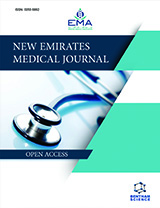Abstract
Background: Phlebitis is still a common complication of peripheral venous catheters. Finding a suitable solution to prevent and reduce the incidence of this complication continues to be a challenge. Various strategies were used to reduce the incidence of phlebitis. Mostly non-pharmacological measures were taken as first preference. Intially, when patients come to any hospital for their treatment, the first is the peripherally inserted venous catheter access conducted inpatient for medication administration, fluid administration and blood transfusion in both the hospital setting and ambulatory setting. About 70% of the patients admitted to the hospital requires peripherally inserted venous catheters (PIVCs). The incidence of phlebitis is higher in patients who undergo continuous intravenous therapy.
Objectives: To find out the effect of hand grip exercise in the sustaining patency of peripherally inserted venous catheters among patients in continuous intravenous therapy.
Methods: During the 8 weeks the hand grip exercise was evaluated in patients, who had undergone continuous intravenous infusion through the peripherally inserted venous catheter for at least 3 days. The measurement of data is based on the patient’s socio-demographic Performa, patency checklist, visual infusion phlebitis score and visual analogue scale. The post-test was conducted in both experimental and control groups.
Result: Till the end of the study, 76 participants were taken. On day 3 of the hand grip exercise maximum of 24 (61.5%) PIVC were patent, whereas in control group 5 (13.5%) PIVC were able to maintain their patency. On day 5 of exercise 34 (91.9%) PIVC were replaced with a cause of phlebitis 33(89.2%) in the control group in comparison with the experimental group only 22 (56.4%) lines were replaced with the same cause of phlebitis 24 (61.5%).
Conclusion: Hand grip exercise is important for clients, to reduce the need for the potentially painful process of placing vascular lines and also helps to control costs by reducing the number of devices used for each client and the development of phlebitis.




























